- Introduction
- General Disease Management Strategies in the Landscape
- Diseases of Trees, Shrubs and Flowers
- Diseases of Turfgrass
- References
Georgia's natural and manmade landscapes and gardens have graced the pages of many magazines with elegance, beauty and solace. Cities, towns and neighborhoods are the very definition of "southern gardens" filled with exquisite plants, both native and exotic. Unfortunately, despite gardener's best efforts, disease-causing pathogens are also present. This publication describes some of the most troublesome diseases of Georgia's landscape plants. The following material will help you identify these diseases and offers recommendations for treatment. Knowledge about the common diseases of Georgia landscape plants will allow professional and amateur growers alike to better fight plant diseases and produce healthy plants.
General Disease Management Strategies in the Landscape
Numerous diseases caused by fungi, bacteria, viruses and nematodes affect ornamental landscape plants and lawns. Some are fairly benign in that they may cause unsightly leaf spots, but they will not significantly harm or kill the plant. Others may be very damaging and result in plant death. Several well known examples of this are the tree diseases, oak wilt and Dutch elm disease.
Just because a plant is susceptible to a disease does not necessarily mean it will become diseased. In order for disease to occur on a particular plant, three important factors must be present at the same time: 1) a plant must be susceptible to the disease, 2) the disease-causing agent (pathogen) must be present and able to infect the plant, and 3) the environment must be favorable for disease development. If one of these components is missing from the "disease triangle," then disease will not occur.
Several key practices can help minimize potential disease problems on landscape plants.
Keep Diseases Out
Some diseases will occur naturally despite gardener's best efforts. But many other diseases are introduced into a landscape on infected plants from nurseries, garden centers and through the sharing of plants from garden to garden, such as in the case of divided herbaceous perennials. Inspect all new plants for the presence of symptoms (leaf spots, dark roots, etc.) or signs (whitish web-like fungal growth, orange-rusty spores, etc.) of disease before bringing them into the landscape site. Plants infected with a disease cannot be cured. The effect of the disease may be lessened through pesticide (fungicide) applications, but this will not cure the plant of disease. Isolate or discard infected plants, which can serve as reservoirs of disease. Clean all gardening tools (shovels, pruners, etc.) to remove soil and plant debris before and after each use. Disinfest tools with Lysol, rubbing alcohol or bleach solution to reduce spreading pathogens on the tools.
Keep the Landscape Site Clean
Discard all plant debris away from the landscape or garden. Regularly inspect plants and discard any with severe disease symptoms. Keep the landscape insect and weed-free. Keep garden hoses off the ground. If adding soil amendments, make sure to buy from reputable dealers. Make sure the planting site has proper drainage and eliminate standing water. Do a soil test to determine the nutrient status and physical characteristics.
Grow Healthy Plants
A healthy plant is less susceptible to disease than a stressed plant. Avoid nutritional, water and environmental plant stresses. Adjust soil pH and fertility levels for optimum plant growth according to soil test results. Do not over-fertilize plants. Irrigate regularly during periods of drought, but do not over-water plants. Follow recommendations for plant species requirements on sunlight, cold hardiness, planting dates and special care. Do not over-crowd a landscape planting. Use proper plant spacing to allow for plant growth over time, which will provide air circulation around plants and reduce disease development.
Keep Foliage Dry
Minimize the duration of leaf wetness after irrigation by proper plant spacing, good ventilation and proper timing of irrigation to promote maximum drying. Avoid irrigating in the late afternoon because plants will not dry before nightfall. Reduce landscape humidity and increase air circulation by thinning annuals and perennials and by selectively pruning branches from trees and shrubs. Also, stay out of gardens when plants are wet to reduce spreading disease from plant to plant.
Cultural, Biological and Chemical Control
Use cultural and biological control alternatives (as mentioned above) before using chemical control. Use chemical control sparingly and efficiently by applying the proper labeled rate at the labeled interval when disease symptoms are first visible. The only chemical controls available for residential landscapes are fungicides.
Fungicides only control diseases caused by fungi. They will not control diseases caused by viruses or nematodes, and they have limited control on bacterial diseases. Avoid the repeated use of a single fungicide or the same combination of materials. Using materials with different modes of action minimizes the potential for development of disease resistance.
Diseases of Trees, Shrubs and Flowers
Root Rots, Crown Rots and Damping-Off
Symptoms:
Root rot diseases are by far the most damaging diseases in Georgia's landscapes. They occur in wet soils with limited soil drainage (porosity) or in areas that are over-watered or remain wet due to location of gutters and downspouts, air conditioning units and slopes, etc. All landscape plants (trees, shrubs and flowers) are susceptible to root rot. The most common pathogens causing root rot diseases are the soil-borne fungi Pythium, Phytophthora and Rhizoctonia. Several other fungi also cause root and crown rots, but they are more common on some plants than others. Fore example, Southern blight caused by Sclerotium rolfsii is more common on herbaceous perennials and vegetable transplants. Black root rot caused by Thielaviopsis basicola is more common on bedding plants such as pansy, petunia and annual vinca, as well as Japanese holly (Ilex crenata) and anise (Illicium spp.).
Plants attacked by soil-borne pathogens may be stunted, develop lesions at the soil line, or wilt and collapse. When larger plants become infected with root rot pathogens, aboveground symptoms include poor growth, off-color foliage, yellowing and dropping of lower leaves, wilting and death. Infected roots are usually brown, soft and decayed. Some root rot pathogens invade the lower stem as well, causing tan, dry cankers or a soft, dark-brown, watery stem rot.
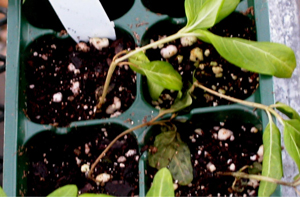 Figure 1. Wilting and damping-off symptoms of Rhizoctonia root rot on annual vinca.
Figure 1. Wilting and damping-off symptoms of Rhizoctonia root rot on annual vinca.[Photo: A. Martinez]
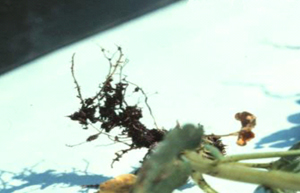 Figure 2. Brown, soft and decayed roots are characteristic of Pythium spp. infection.
Figure 2. Brown, soft and decayed roots are characteristic of Pythium spp. infection.[Photo: UGA Plant Pathology]
Management Strategies:
- Follow cultural practices listed under the general disease management strategies.
- Inspect plants for root rot symptoms before purchasing and installing into the landscape.
- Minimize plant stress. Plants under stress are more susceptible to root rot pathogens.
- Root rot infection is favored by wet soils, poor drainage and high soluble salts, Therefore to control the disease, it is important to improve soil structure and drainage by incorporating organic matter, good quality compost, or composted hardwood or pine bark; installing French drains; avoid planting too deeply; and remove infected plants from the area. Improving the soil structure and drainage will often alleviate root rot disease within a landscape site.
- Accurate diagnosis of specific root rot pathogens is necessary for optimal use of fungicides, since most fungicides are only effective against a select number of fungal pathogens. However, very few fungicides are packaged in small quantities for home residential use.
Powdery Mildew
Symptoms:
Powdery mildew is characterized by the presence of whitish fungal growth on the surfaces of leaves, stems and flowers. Infection of young, expanding leaves or shoots can result in severe distortion. There are many different fungi in the powdery mildew group; some are quite host-specific while others can infect a wide range of plants. The fungi obtain nutrients from host plants by penetrating the outermost layer of plant cells. Powdery mildew spores are easily dispersed by air currents to surrounding plants, infecting plants of the same species. Unlike most fungal diseases, leaf wetness is not required for powdery mildew infection.
Disease development is favored by high humidity caused by dry, sunny days followed by cool, moist nights. Powdery mildew is common on woody plants including roses, crape myrtles, euonymus, dogwood and oak, as well as herbaceous plants such as verbena, phlox, monarda and gerbera daisy.
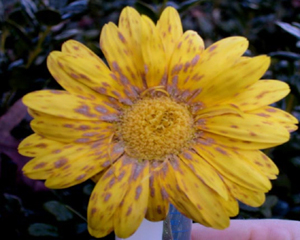 Figure 3. Gray fungal growth characteristic of powdery mildew.
Figure 3. Gray fungal growth characteristic of powdery mildew.[Photo: A. Martinez]
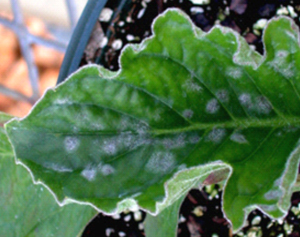 Figure 4. Whitish and gray fungal growth characteristic of powdery mildew on leaves.
Figure 4. Whitish and gray fungal growth characteristic of powdery mildew on leaves.[Photo: A. Martinez]
Management Strategies:
- Reduce humidity by increasing air circulation.
- Increase plant spacing or selectively prune branches to improve ventilation.
- Remove affected stems or leaves from the plant to reduce disease pressure.
- Rake and remove fallen plant litter.
- Use fungicide sprays as needed at the first sign of disease. Fungicides may be necessary when conditions are favorable for disease. Avoid repeated use of a single fungicide or fungicides with the same mode of action to minimize the potential for development of fungicide resistance.
- Consult the Georgia Pest Management Handbook, available at your local Georgia Extension Service office, for fungicide recommendations.
Fungal Leaf Spots
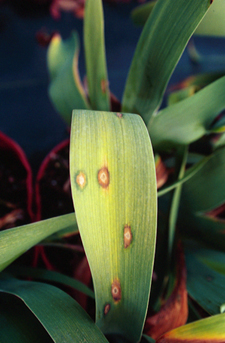 Figure 5. Fungal leaf spot on iris.
Figure 5. Fungal leaf spot on iris.[Photo: J. Williams-Woodward]
Symptoms:
Fungal leaf spots are very common on landscape plants. However, very few cause serious damage to the affected plants. The leaf spot disease on red-tip Photinia, caused by the fungus Entomosporium, is an exception. This disease has virtually eliminated red-tips from Georgia landscapes. Fungal leaf spot symptoms range from tiny discolored specks to larger blotches. The lesions often have tan to gray centers with darker brown, red or purple margins depending on the host plant and pathogen involved. Most of these diseases affect only one or a few plant species. Fungal leaf spot pathogens survive on infected plant debris and are spread by spores carried in air currents or splashing water. Prolonged leaf wetness favors fungal leaf spot disease development.
Management Strategies:
- Inspect plants on a regular basis for fungal leaf spot symptoms.
- Discard regularly symptomatic plants in favor of less susceptible cultivars or plant species.
- Reduce humidity by increasing air circulation.
- Increase plant spacing or selectively prune branches to improve ventilation.
- Rake and remove fallen leaf litter from beneath affected plants to reduce disease pressure and fungal survival sites.
- Avoid long durations of leaf wetness; do not overhead irrigate plants and do not irrigate late in the afternoon so plants go through the evening wet.
- Use protective fungicides preventively or at first sign of disease. Despite the incidence in landscape situations, fungal spots rarely require chemical control.
- Consult the Georgia Pest Management Handbook for fungicide recommendations.
Leaf Rusts
Symptoms:
Leaf rust diseases are common on roses, snapdragons, hollyhocks, crabapple and, most recently, daylilies. The most diagnostic sign of the disease are the raised pustules that rupture to release powdery, orange to rust-colored spores on the underside of the affected leaf. Light colored to yellow spots can be seen on the upper leaf surface directly opposite the rust pustules.
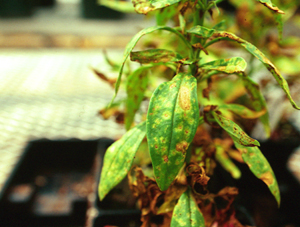 Figure 6. Yellow spots and rust-colored spore pustules of snapdragon rust.
Figure 6. Yellow spots and rust-colored spore pustules of snapdragon rust.[Photo: J. Williams-Woodward]
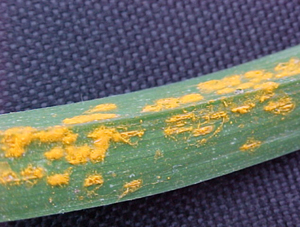 Figure 7. Bright orange rust spores and pustules on the underside of a daylily leaf.
Figure 7. Bright orange rust spores and pustules on the underside of a daylily leaf.[Photo: J. Williams-Woodward]
Management Strategies:
- Remove affected leaves or plants from the landscape to reduce disease spread.
- Clean plant debris in the fall or early spring to remove over-wintering rust spores.
- Keep plants are dry as possible. Avoid long durations of plant wetness.
- Use protective fungicides preventively to reduce disease development and spread.
- Consult the Georgia Pest Management Handbook for fungicide recommendations.
Leaf and Flower Galls
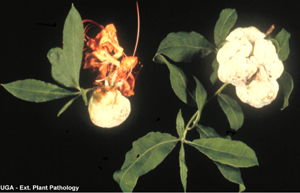 Figure 8. Leaf galls caused by the fungus Exobasidium spp. on azalea.
Figure 8. Leaf galls caused by the fungus Exobasidium spp. on azalea.Symptoms:
Leaf and flower galls, caused by the fungus Exobasidium spp., are common on azalea, rhododendron, mountain laurel (Kalmia) and camellia in the spring during wet, humid, cool weather. Infection only occurs at leaf or flower bud break if favorable environmental conditions exist.
Leaf and flower tissue swells and becomes fleshy and off-color. Initially galls may be light green to pinkish. As they age, the galls turn white. On camellia, only the backside of the affected leaves turn white. Eventually the galls blacken and turn hard. Spores for the following year's infection are released when galls are white. The disease does not cause significant damage to affected plants.
Management Strategies:
- Remove galls as soon as detected and before they turn white to reduce next year's infection and disease development.
- Fungicides are generally neither needed nor recommended to control leaf galls. Timing of fungicide application must coincide with bud break. Applications after galls are visible are ineffective.
- Consult the Georgia Pest Management Handbook for fungicide recommendations.
Botrytis Blight
Symptoms:
Botrytis blight is an ever-present threat to ornamental plants in the landscape and greenhouse. The fungus causes a range of symptoms, including spots and blights on leaves and flowers, stem cankers, crown rot, wilting and damping-off. Botrytis infections also may cause discoloration and death of flower buds and premature loss of flowers. The fungus is spread by the movement of spores in air currents, in splashing water and on insects. The fungus commonly invades wounded or senescent tissue, such as fallen flower petals or other fresh plant residues. It can also invade healthy tissue in contact with infected residues. Masses of fuzzy, grayish-brown spores on thin black stalks develop on infected plant tissues under cool, moist, humid, cloudy conditions. The presence of these spores is diagnostic for confirming Botrytis infections.
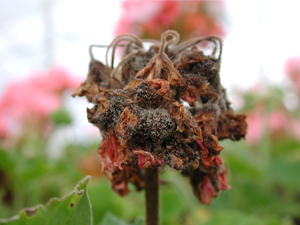 Figure 9. Flower blight caused by Botrytis.
Figure 9. Flower blight caused by Botrytis.[Photo: D. Mueller]
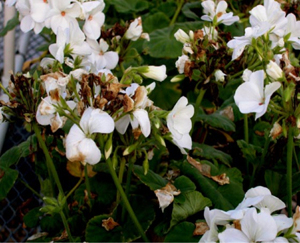 Figure 10. Geranium flowers showing Botrytis blight symptoms. [Photo: A. Martinez]
Figure 10. Geranium flowers showing Botrytis blight symptoms. [Photo: A. Martinez]Management Strategies:
- Remove senescent and affected flowers and leaves.
- Reduce humidity and promote leaf drying as described in the general disease management strategies section.
- Fungicides may be necessary when conditions are favorable for disease. Avoid repeated use of a single fungicide or fungicides with the same mode of action to minimize the potential for development of resistance.
- Consult the Georgia Pest Management Handbook for fungicide recommendations.
Seiridium Canker
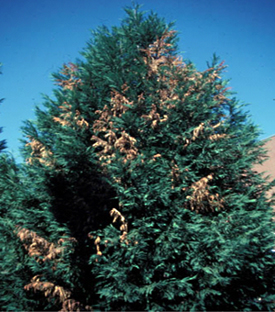 Figure 11. Branch dieback symptoms of Seiridium canker.
Figure 11. Branch dieback symptoms of Seiridium canker.[Photo: J. Williams-Woodward]
This disease is particularly prevalent on drought stressed Leyland Cypress trees during hot weather. The disease is caused by the fungus Seiridium unicorne.
Symptoms:
Yellowing and browning of old foliage precedes fading and death of twigs and branches. Sunken, long cankers with a reddish tinge develop at wounds on bark, bark is darkened and resin exudes from margins of cankers. Infection can occur on any part of the plant and stage of the tree. Infected trees look thinly branched.
Management strategies:
- Drought or heat stressed plants are particularly prone to the disease.
- There is no control other than pruning out the affected branches.
- Trees need to be irrigated during dry weather to reduce canker development.
- No fungicides are effective once infection has taken place.
Bacterial Diseases
 Figure 12. Angular, purplish bacterial leaf spots develop along the leaf veins of an oak-leaf hydrangea. [Photo: J. Williams-Woodward]
Figure 12. Angular, purplish bacterial leaf spots develop along the leaf veins of an oak-leaf hydrangea. [Photo: J. Williams-Woodward]Symptoms:
Bacterial pathogens cause leaf spots and stem rots on a variety of ornamental plants. Leaf spots are initially water-soaked or greasy in appearance, often angular and concentrated along leaf veins or margins. In some cases, the leaf tissue surrounding the necrotic spots may be yellow. Bacterial pathogens require films of water to enter plant tissues. Cool, wet conditions favor leaf spots caused by Pseudomonas species. Bacterial soft rots of stems are usually associated with wounds from handling or insect feeding. Fungus gnat larvae can spread soft rot bacteria. Bacterial diseases of ornamental plants can cause wilt and death of plants. Any plant suspected of having a bacterial disease should be sent to a diagnostic laboratory for confirmation of the disease.
Management Strategies:
- Promote leaf drying as described in the general disease management strategies section. Do not overhead irrigate plants.
- Destroy severely affected plants. Remove all plant debris beneath plants.
- Copper fungicides may help protect plants from bacterial infection, but they must be used along with a strict sanitation program for effective control.
- Consult the Georgia Pest Management Handbook for fungicide recommendations.
Fire Blight
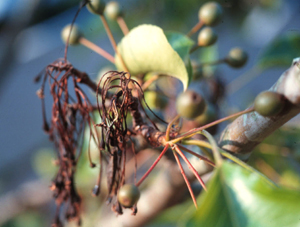 Figure 13. Twig and branch necrosis symptoms of Fire Blight. [Photo: J. Williams-Woodward]
Figure 13. Twig and branch necrosis symptoms of Fire Blight. [Photo: J. Williams-Woodward]Fireblight is a destructive, highly infectious and widespread disease caused by the bacterium Erwinia amylovora. Fireblight affects plants in the Rosaceae family such as pear, crabapple, cotonoaster, photinia, pyracantha, quince, etc.
Symptoms:
Young twigs and branches die from the terminal end and appear burned or deep rust colored. Branches may bend resembling a shepherd's crook. Dead leaves and fruit generally remain on the branch. Infection occurs during blooming and is favored by wet, warmer conditions. The disease is most apparent in April-June.
Management:
- Prune out branches 6-8 inches below the signs of damage; disinfect pruning tools in 70 percent isopropyl alcohol or 10 percent bleach solution between each cut.
- Avoid heavy nitrogen fertilization, especially in summer.
- Avoid splashing water on the foliage of the plants; plant fireblight-resistant varieties.
- Streptomycin or copper-containing chemicals applied during bloom helps to control the disease.
- Consult the Georgia Pest Management Handbook for chemical control recommendations.
Viral Diseases
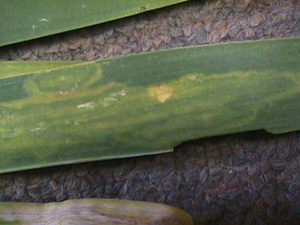 Figure 14. Yellow ringspot pattern on lily leaf.
Figure 14. Yellow ringspot pattern on lily leaf.[Photo: J. Williams-Woodward]
Symptoms:
Virus symptoms are often quite striking and distinctive. Chlorotic mottling, ringspots and line patterns on the foliage or stems may occur. Stunting is commonly observed.
Management Strategies:
- Inspect plants regularly for virus symptoms. Test symptomatic plants for virus diseases to have definitive diagnoses of specific virus problems. Samples may be sent to a diagnostic laboratory or commercial virus-testing company, or they may be tested using commercially available virus test kits.
- Maintain strict weed control in the landscape.
- Destroy plants showing virus symptoms.
- Manage insects to reduce the spread of viruses.
Drought Stress on Trees
 Figure 15. Leaf browning, wilting and curling -- symptoms of drought stress. [Photo: A. Martinez]
Figure 15. Leaf browning, wilting and curling -- symptoms of drought stress. [Photo: A. Martinez]After years of drought, many trees show symptoms of drought stress. Some plants are more affected by drought than others, such as bald-cypress, beech, dogwood, and magnolia. Many native species are particularly adapted to drought conditions. Native trees that tolerate drought include hackberry, hickory, hawthorns and oak.
Symptoms:
Trees can show drought stress in a variety of ways. Leaves may wilt, turn yellow, show early fall color, turn brown at the tips, curl, or show all of these symptoms. Green leaves, stems, roots and fruits may contract. Shrinking can cause radial cracks in the tree trunks. The leaves of some trees such as hickory will usually turn yellow and drop easily. River birch, dogwood and red maple may show early fall color. Pine trees seldom show drought stress unless the drought is prolonged. Pines needles will bend or droop at the base of the needle. Needles then either turn brown or remain green and are permanently bent. Second year needles will often turn yellow and begin to drop from the tree prematurely.
Management Strategies:
- Irrigate when possible and monitor for insects and disease more carefully. Trees become more vulnerable to these pathogens when stressed.
- Slow delivery of water often covers the entire root system. When possible use soaker hoses or drip irrigation.
Diseases of Turfgrass
Brown Patch
Brown patch is caused by the fungus Rhizoctonia solani. All turf species grown in Georgia are susceptible to the disease.
Symptoms:
Brown patch symptoms appear as circular patterns or rings of dead grass. The turf turns brown, individual leaves exhibit irregular spots and grass blades rot off. If observed closely, blighted areas initially show a dark purplish-green, which quickly fades to a light brown. Brown patch infection on the crown area promotes rotting of tissue, therefore leaves and runners pull out easily. Circular or irregular patches of blighted grass develop rapidly. The patches can be very small (a few inches in diameter), but under conducive conditions large areas become affected (50 inches or more). New leaves may emerge in the center of the circular patch giving diseased areas a ring or doughnut-shaped appearance, commonly known as "frog eye."
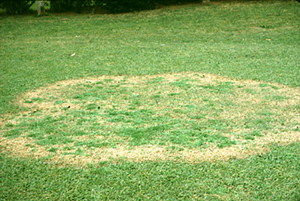 Figure 16. Rhizoctonia solani infection on zoysiagrass. [Photo: L. Burpee]
Figure 16. Rhizoctonia solani infection on zoysiagrass. [Photo: L. Burpee]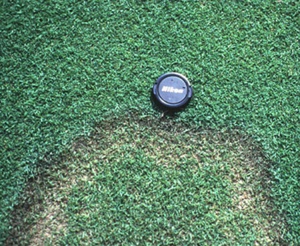 Figure 17. Brown patch ring on bentgrass.
Figure 17. Brown patch ring on bentgrass.[Photo: L. Burpee]
Management Strategies:
- Scout and look for abnormal appearance or spots on the turfgrass.
- Avoid excessive nitrogen fertilization.
- Water timely and deeply, preferably after midnight and before noon.
- Increase air circulation by selectively pruning overhanging tree or shrub branches.
- Reduce thatch to 1 inch thick.
- Several fungicides are available to control the disease. Consult the Georgia Pest Management Handbook for current chemical control recommendations.
Melting Out or Curvularia Leaf Spot
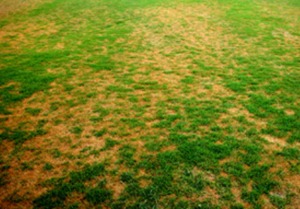 Figure 18. Yellowing and thinning symptoms of melting out. [Photo: A. Martinez]
Figure 18. Yellowing and thinning symptoms of melting out. [Photo: A. Martinez]The fungus Curvularia is the causal agent of "melting out" disease. Usually a weak pathogen, Curvularia can become a serious problem when the grass has been constantly under drought stress. The disease can be particularly important in Bermuda, Zoysia and Centipede.
Symptoms:
An overall yellowing and thinning of the turf is frequently observed. When observed closely, purplish-brown to black spots with tan centers on the leaf blade and sheath are present. The lower leaves of the infected plants become shriveled and blighted. When melting-out infection is severe, almost all of the leaves and tillers die, causing severe thinning of the stand.
Management Strategies:
- Avoid drought stress of turf. Irrigate deeply and as infrequently as possible.
- Avoid frequent shallow watering.
- Increase air circulation to speed turf's drying process by selectively pruning overhanging tree or shrub branches.
- Minimize the amount of shade.
- Reduce turf stress by using lightweight equipment.
- Avoid the application of high rates of water-soluble nitrogen in the spring.
- Reduce thatch in the summer for warm-season grasses.
- Several fungicides available to control the disease. Consult the Georgia Pest Management Handbook for current chemical control recommendations.
Pythium Root Rot on Turf
Pythium on turf is a common and important disease of turfgrass in Georgia. The disease is caused by several Pythium spp. All turf species grown in Georgia are susceptible to the disease.
Symptoms:
Pythium root rot is common on highly maintained and poorly drained turf. Although symptoms of Pythium root rot are typically non-distinctive, this disease can appear as yellow, irregularly shaped patches. The affected turfgrass is thin, off-color and slow growing, while the root system is stunted with reduced volume and vigor. Foliar mycelium does not occur.
Management strategies:
- Scout for abnormal appearance of the turfgrass, and apply optimum amounts of nitrogen, phosphorus and potash. Avoid high nitrogen in the spring when roots are forming.
- Increase the height of mower cut and reduce mowing frequency.
- Avoid over-watering, minimize the amount of shade and improve soil drainage.
- Soil aeration may be necessary to reduce soil compaction.
- Several fungicides are available to control the disease. Consult the Georgia Pest Management Handbook for current chemical control recommendations.
References
American Phytopathological Society. www.apsnet.org/edcenter/intropp/lessons/prokaryotes/Pages/FireBlight.aspx
Department of Plant Pathology, University of Georgia. http://plantpath.caes.uga.edu/extension/DiseaseLibrary.html
Sinclair, W. A., Lyon, H. H., and Johnson, W. T. 1987. Diseases of Trees and Shrubs. Comstock Publishing Associates, Cornell University Press, Ithaca, N.Y.
Smiley et al. 2000. Compendium of Turfgrass Diseases. APS press.
Martinez, A., et al. Turfgrass Diseases in Georgia: Identification and Control (B 1233). http://extension.uga.edu/publications/detail.cfm?number=B1233
Status and Revision History
Published on Nov 17, 2003
Published on Feb 10, 2009
Published on May 04, 2009
Published on Oct 08, 2009
Published with Full Review on May 04, 2012
Published with Full Review on May 21, 2015
Published with Full Review on May 29, 2020


























































